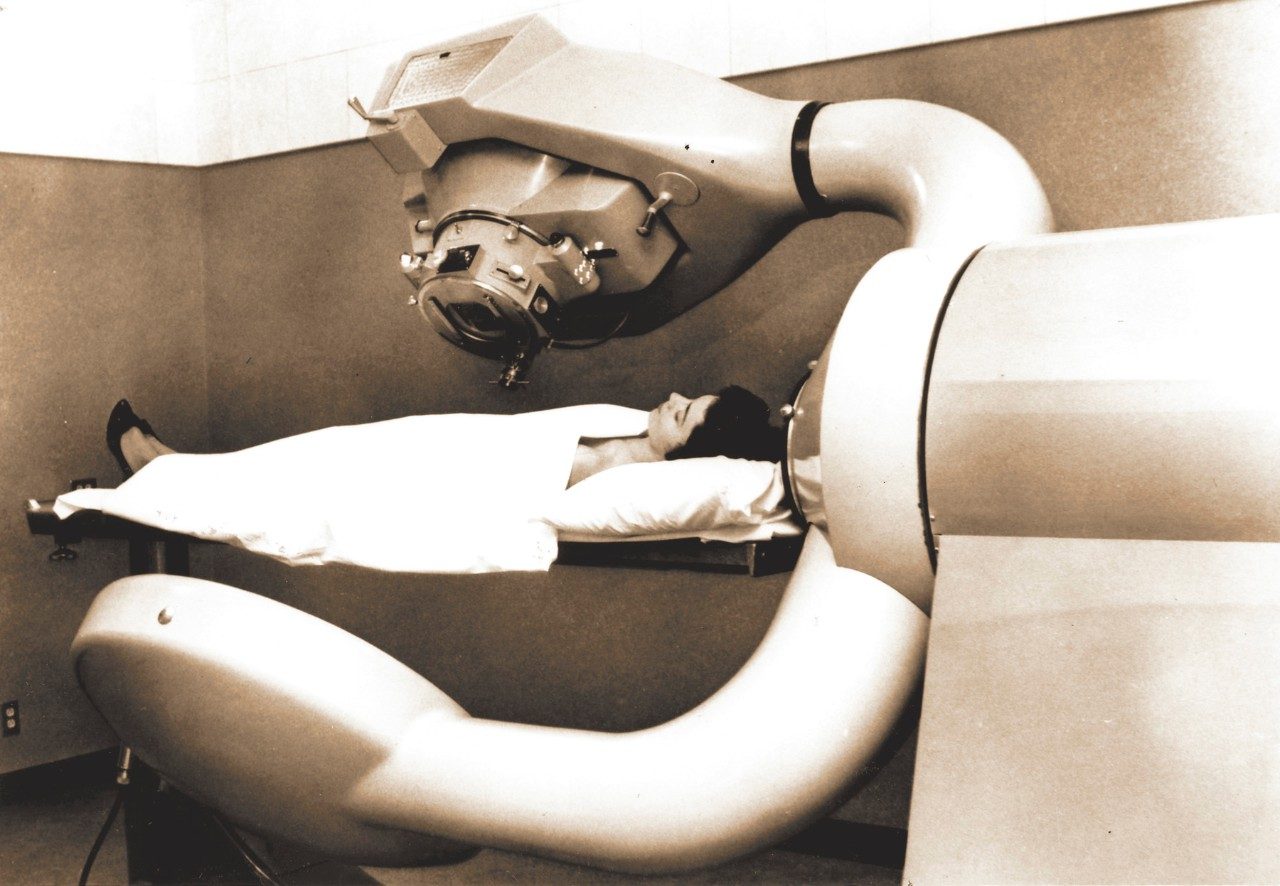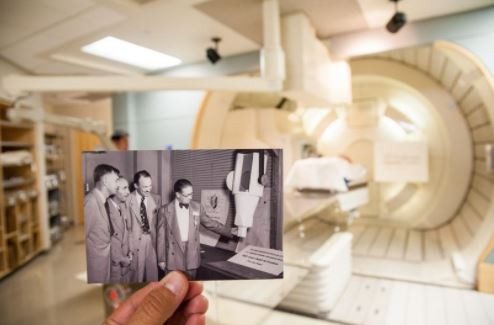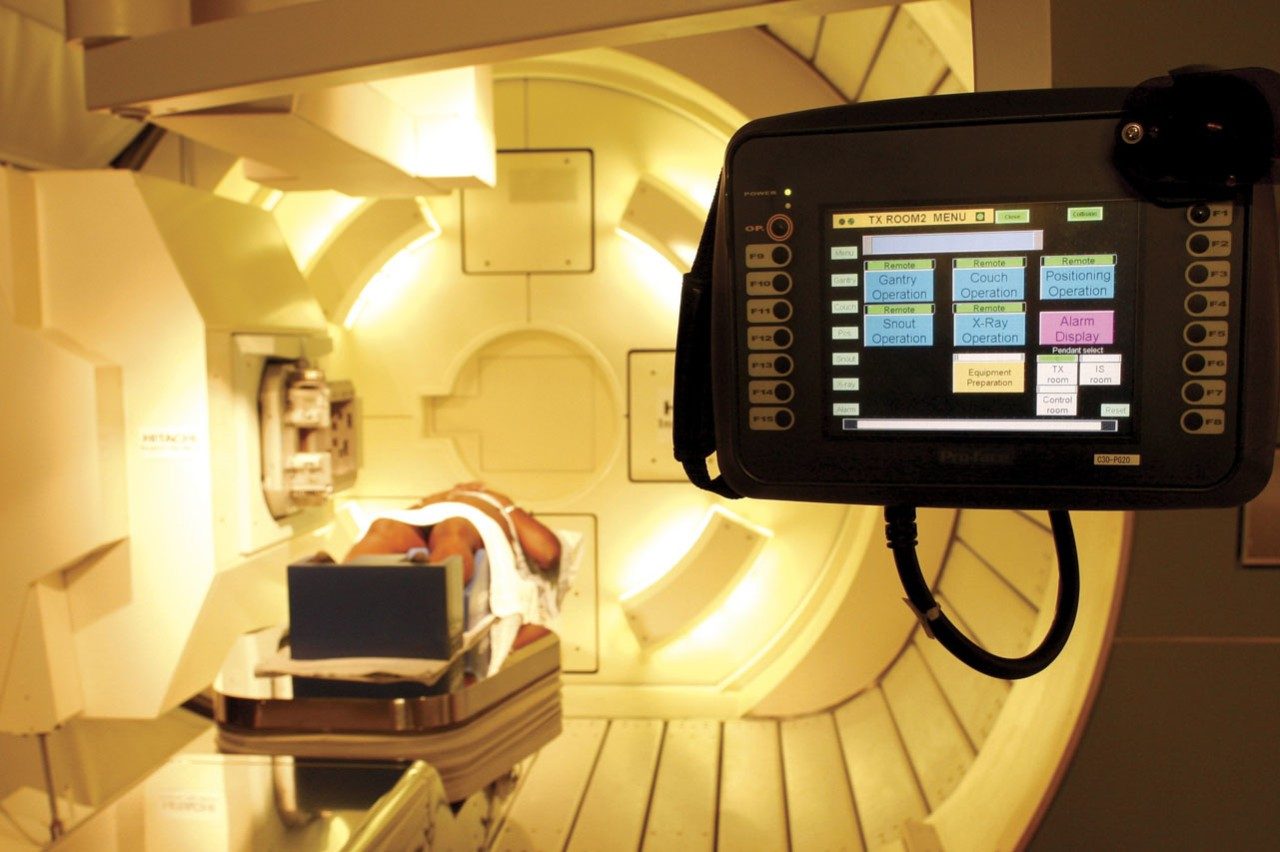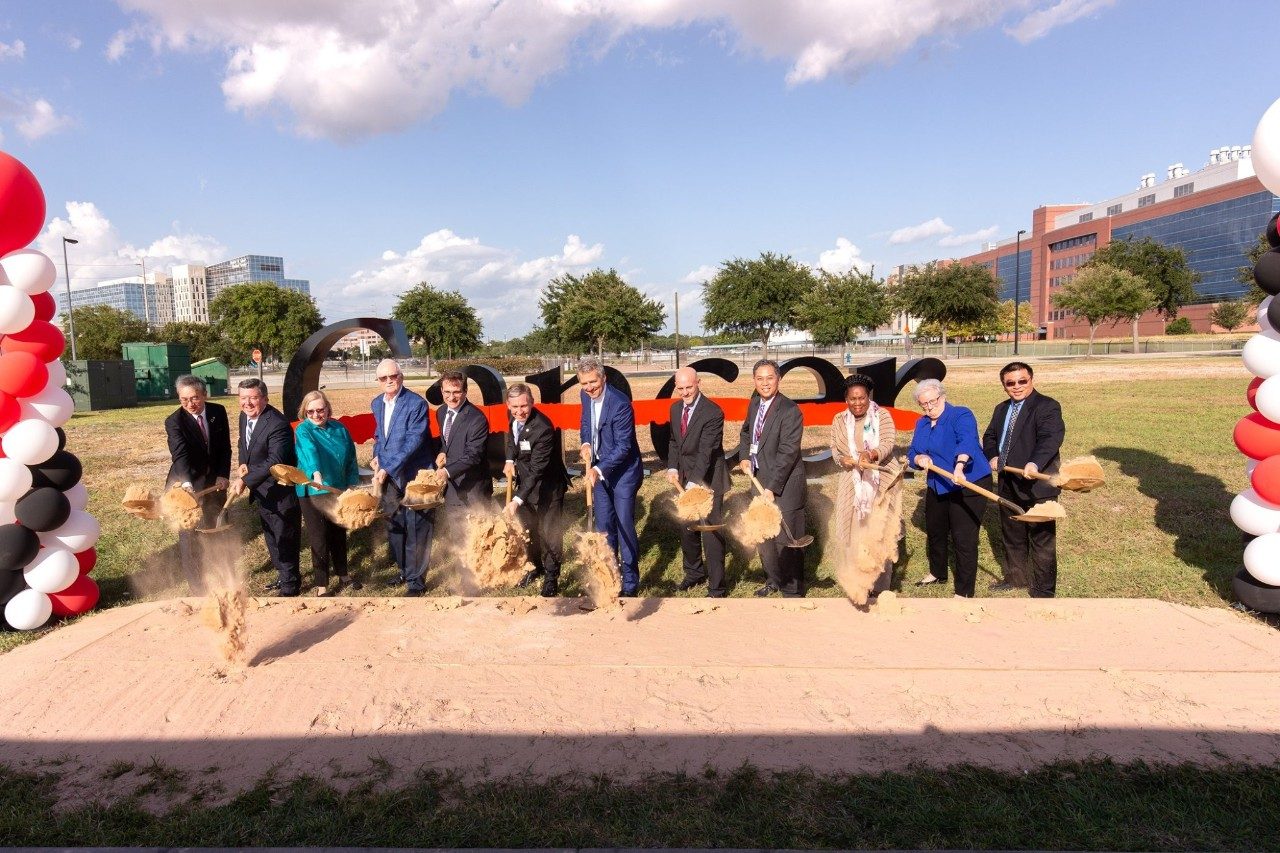History of Proton Therapy
The advancements of proton technology as a treatment option for cancer are exciting, but not new. The idea of using protons in medical treatment was first suggested in 1946 by physicist Robert R. Wilson, Ph.D. The first attempts to use proton radiation to treat patients began in the 1950s in nuclear physics research facilities, but applications were limited to few areas of the body.
In the late 1970s, imaging advancements coupled with the development of sophisticated computers and improved accelerator and treatment delivery technology made proton therapy more viable for routine medical applications, such as cancer treatment. Only in recent years has it become possible to develop proton beam facilities in conjunction with established medical centers.

In 1946, Robert Wilson proposed the use of proton radiation therapy as a cancer treatment.

In the black-and-white photo here, you see a model of the 1000-Curie Cobolt-60 irradiator with Drs. Marshall, Brucer, Fletcher, Clark and Grimmett.

Today we treat many types of cancer with highly-focused radiation targeting cancerous tissue while sparing healthy tissue.

On Aug. 8, 2019, MD Anderson broke ground for the expansion of the Proton Therapy Center.

On Oct. 16, 2020 MD Anderson celebrated a construction milestone with the topping out of the second Proton Therapy Center building.

In January 2024, MD Anderson Proton Therapy Center 2 began treating patients.
Pioneering proton therapy
In 2006, MD Anderson opened the Proton Therapy Center and began treating patients with one of the most advanced and innovative technologies available: proton therapy.
At that time, the center was one of only three in the nation and the first of its kind integrated within a comprehensive cancer hospital , giving patients the benefit of a powerful technology with fewer side effects, all delivered by world-renowned cancer specialists.
Today, MD Anderson remains a leader in the world of proton therapy. We treat many types of cancer with highly-focused radiation targeting cancerous tissue while sparing healthy tissue. As rapid technology chances in radiotherapy, the goal remains to reduce unnecessary radiation to healthy parts of the body.
Conditions We Treat
Find information about diseases treated with proton therapy.
Ask a Question
Submit your question to a proton therapy specialist.
request an appointment online.
Help #EndCancer
Give Now
Donate Blood
Our patients depend on blood and platelet donations.
Shop MD Anderson
Show your support for our mission through branded merchandise.
